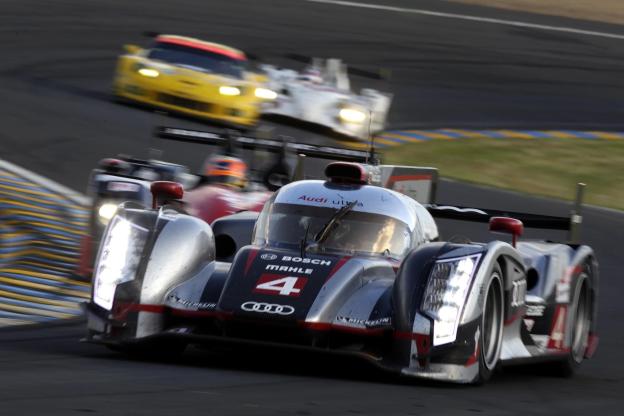
Americans don’t usually realize it because NASCAR is virtually fruitless when it comes to benefiting consumer cars, but the reality is Motorsports aren’t just a battlefront for the world’s leading automakers to pour billions into embarrassing their rivals. That’s only part of the story. Many important technologies have come straight from the racing paddock and into your neighborhood showroom.
While the painfully low-tech NASCAR – comprised of carbureted coupes – dominates American auto racing, the rest of the planet is engrossed in the Le Mans and Formula 1 series. Unlike NASCAR, other racing series leads to some of the most significant automotive efficiency breakthroughs.
Take Audi’s Le Mans racecars, for example. Over the last 15-some years, Audi’s engineers have designed engine improvements that have quickly been implemented into the consumer market.
In 2001, the Audi Le Mans project began with a 544-horsepower 3.6-liter gasoline engine. While these power outputs were fine, fine is never enough in Motorsport. Designers went back to the drawing board and within a year improved engine power yield to 610 horsepower. How did they do it? By inventing the direct-injection fuel system called TFSI. Audi then quickly rolled the new fuel-injection tech into its road-going cars.
TFSI allowed for more power on the track but also diminished on fuel consumption and start times – while also increasing the throttle response. Seconds count everywhere in the Le Mans series. Audi’s TFSI was able to save the team 1.3-seconds at ignition during pit stops, which can truly change the course of a race. On the consumer front, TFSI allowed drivers to save money on fuel and also enjoy a bit more giddy-up from the throttle pedal.
Gasoline efficiency had not been the only area in which Audi’s Le Mans team has improved consumer cars. In 2006, Audi was running a 5.5-liter V12 TDI diesel that produced 650 horsepower. By 2011, regulations limited displacement to 3.7-liters – representing a 1.8-liter decrease. Not wanting to lose power, designers created a new V6 TDI with the exhaust flowing to the inside of the V, rather than the outside like on traditional V-shaped engines. This innovative switch of exhaust flow allowed designers to save weight and install a mono-turbocharger capable of double flow.
These kinds of innovations have allowed Audi to squeeze extra horsepower from each individual piston. In 2006, Audi was churning out 54 horsepower from each piston. By 2011, that number had jumped to 90 horsepower – a 65 percent increase.
It’s these kind of efficiency and power output jumps that have allowed Audi to meet ever-increasing global efficiency regulations without having to zap engine power – like we saw in the early 1970s. Thanks to motor racing, the car in your driveway is both more economical and also more powerful.


